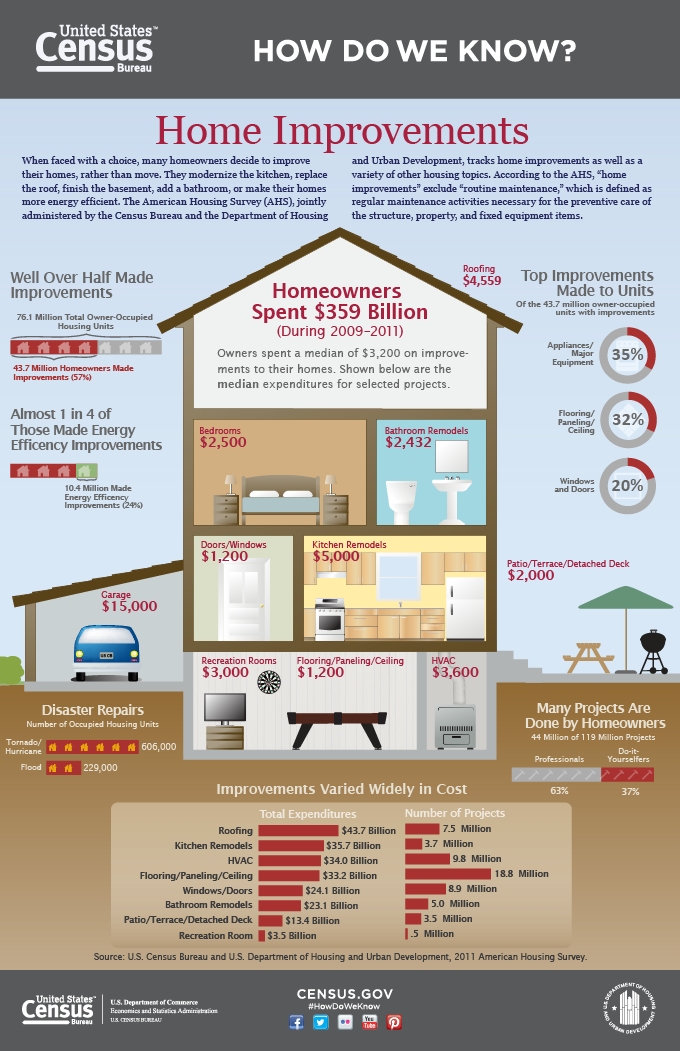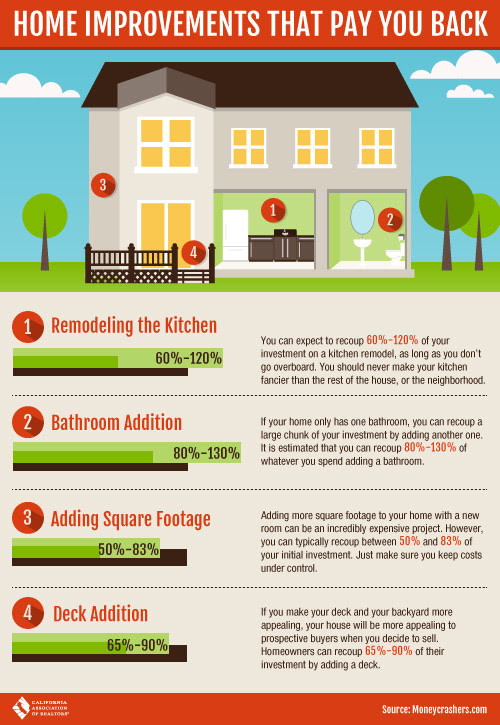From Around the Web: X Excellent Infographics About Home Improvement
For many individuals, a home is one of the biggest investments they will make in their lifetime. That’s why it is so important for homeowners to understand their home improvement needs, including yearly maintenance and repair concerns.
We at Palo Alto Plumbing, Heating, and Air know how important it is for you to get the information you need to protect your home and keep it running smoothly and efficiently throughout the year. That’s why we’ve put together a list of informative infographics that help you better understand your home improvement needs.
Top Home Improvement Infographics
Whether you are a brand new homeowner or you’ve lived in your house for decades, it’s important to understand your home improvement needs. Use the infographics below to educate yourself on basic home improvement:
United States Census Bureau – Home Improvements
The U.S. Census Bureau gathers important data about the improvements that U.S. homeowners make to their homes. This infographic gives you more information about the top improvements that U.S. homeowners are making and how much they spend each year on home improvement. If you are planning your home improvement budget for the year, this infographic will give you a better idea of what most homeowners choose to focus on and how much you can expect to spend.
Home Improvements That Pay You Pack
Before investing in home improvement projects, it’s important that you consider your return on investment. Though any home improvement project may make your home a more comfortable environment, some projects are more worth your while because they tend to provide a higher resale value when you are ready to sell your home. This infographic gives a nice breakdown of the projects that will end up paying you back in the end.
Drab to Fab: Home Improvements for Less than $1,000
Want to make some improvements to your home without breaking the bank? This infographic offers some awesome tips for affordable home improvement. It gives a simple breakdown of the costs for different improvements you can make in the kitchen, living room, bathroom, and bedroom. It also provides some general tips for saving more money on your home improvement projects. This is a great infographic for the budget-conscious homeowner.
Want to find more great, informative content on home improvement topics? Each month, we update our blog with interesting posts on home improvement, HVAC, and energy efficiency topics.




